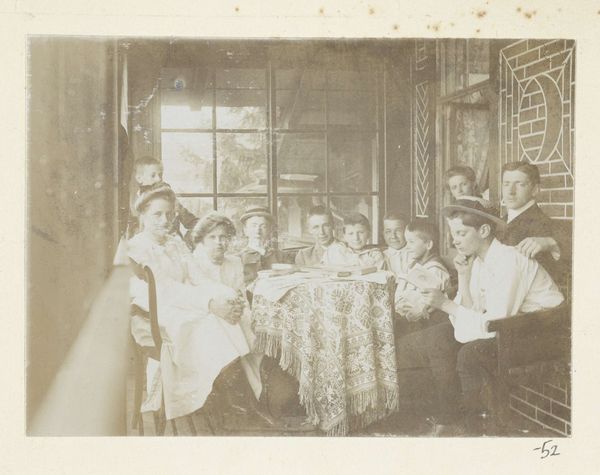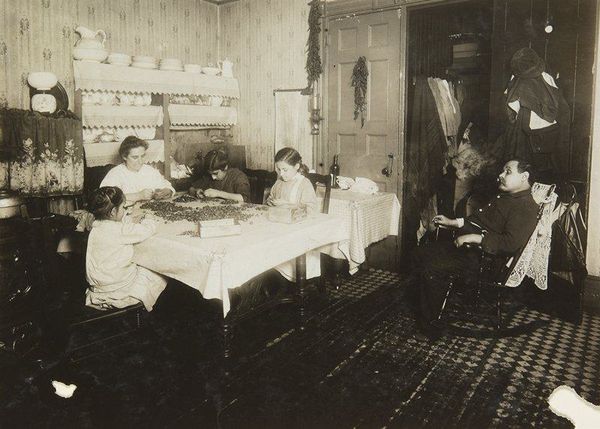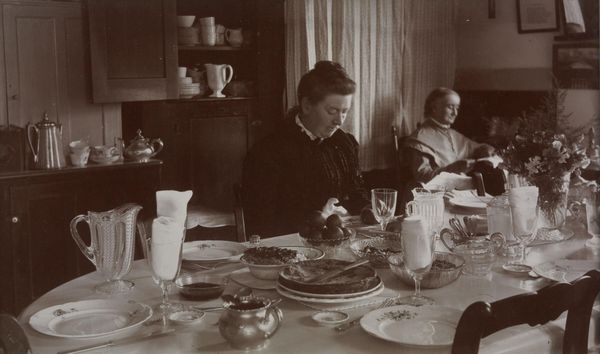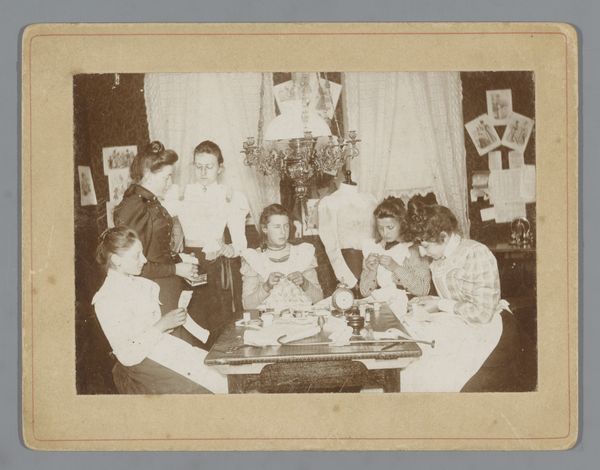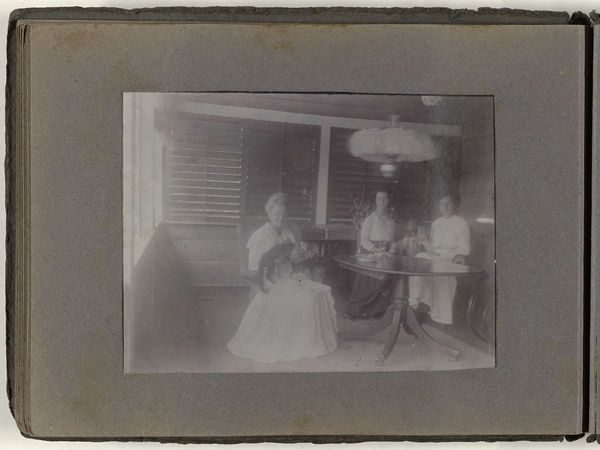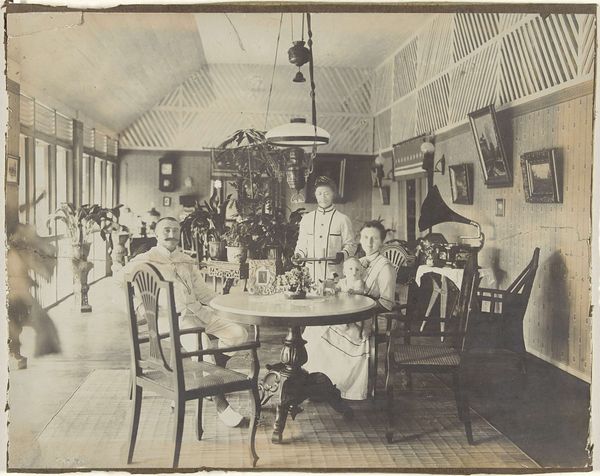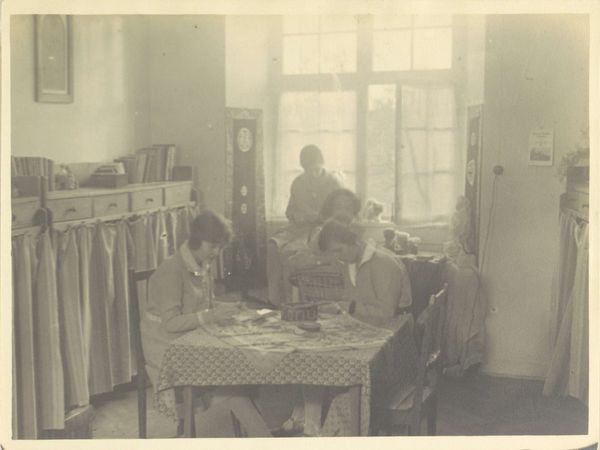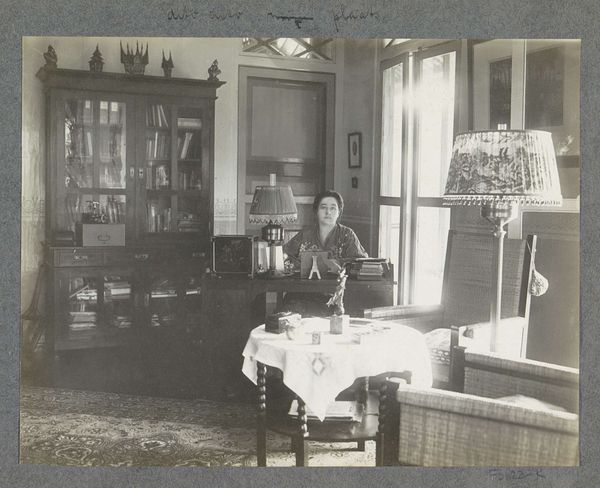
Portret van twee nannies, Nanny Brooks en Daisy Brooks, met Renée en Sacha zittend om een tafel 1906
0:00
0:00
henrypauwvanwieldrecht
Rijksmuseum
Dimensions: height 172 mm, width 227 mm, height 198 mm, width 258 mm
Copyright: Rijks Museum: Open Domain
Curator: Welcome. Here we see a photograph from 1906, currently held at the Rijksmuseum. The artist, Henry Pauw van Wieldrecht, titled this work "Portrait of two nannies, Nanny Brooks and Daisy Brooks, with Renée and Sacha sitting at a table." Editor: My immediate sense is one of slightly stilted domesticity. The composition, the stiff poses of the subjects, creates a feeling of observation rather than participation. It is very balanced formally. Curator: Absolutely. Note how the arrangement places the figures in a structured format—two adults anchoring either side, framing the children. The tablecloth's texture and the soft light are crucial elements in creating the visual narrative. Editor: It’s interesting to consider what the labor entailed. The women pictured, seemingly middle-class domestics or servants, how much effort and resources were devoted to this one picture? Was it taken for the family who employed them, or did they decide on it by themselves? How was this process of selecting this specific material for the portrait? Curator: Fascinating questions. Let’s consider, though, how the muted tones and the textures themselves influence the overall aesthetic. There’s a contrast between the crisp white linen and the softer rendering of faces and clothes. What meanings do these textural differences evoke for you? Editor: I cannot overlook the significance of access here—access to technology and capital. The clothing, even the type of light fixture…these aren’t simply aesthetic choices but reflect tangible resources and social class, all enabled by available materials, labor, and methods of production in that time. The medium is itself telling. Curator: A sharp point! Perhaps the success of this piece lies in its capacity to invite us into a tableau of quiet contemplation that we would have never gotten a chance to witness by ourselves. The light emanating from the left draws our eye across the figures, doesn't it? Editor: Right, this makes me wonder if a discussion surrounding consumption might be valuable when taking on art. Even today we are “consuming” a family’s past, seeing them gathered during dinner hour! Curator: Precisely, this photographic capture speaks to many things. Thanks to your observations, we can acknowledge both form and context within it! Editor: My pleasure, it always proves invaluable to recognize these layered conversations. Thank you.
Comments
No comments
Be the first to comment and join the conversation on the ultimate creative platform.
